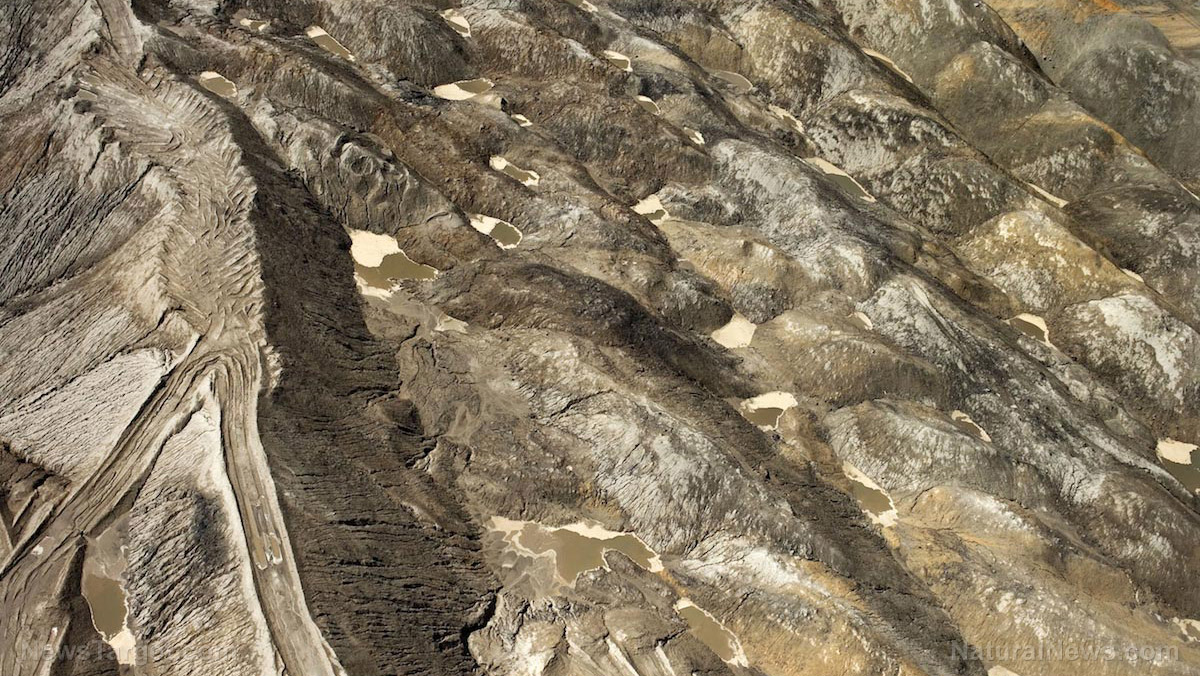EPA: Soil in the upper American Fork Canyon contain high levels of arsenic, lead, mercury, and other harmful metals
05/19/2018 / By Edsel Cook

The American Fork Canyon in Utah is drawing in more people who enjoy its great beauty. But the U.S. Environmental Protection Agency (EPA) is concerned about the abandoned mines that dot the upper canyon. In a report from The Salt Lake Tribune, the soils around those sites have been contaminated with heavy metals like arsenic, lead, and mercury.
The EPA completed its investigation of the soil around the old mines in the upper parts of the canyon in March 2018. They reported that all the samples showed arsenic levels that greatly exceeded the EPA’s safe levels.
Lead was also present in high concentrations at the abandoned mines. The worst offenders – and therefore the most dangerous ones for outdoor enthusiasts – were the Yankee and Globe mines. (Related: Is the Grand Canyon being put in danger by nearby uranium mining?)
The heavy metals from the old mines are not yet threatening populated areas in the American Fork Canyon. Other tests suggested that the water in the canyon remains safe for the most part.
Old mines are leaking heavy metals like arsenic, lead, and zinc
EPA official Ryan Dunham explained that federal agencies knew about the problem for several years. However, they also presumed the affected areas were difficult to access for the most part.
The canyon’s growing fame as a recreational destination has forced the EPA to reassess the situation. The agency is concerned about people who are repeatedly exposed to heavy metals.
Durnham said contaminated dust is the most serious threat to health. Activities like ATV riding could disturb the polluted soil and raise clouds of dust that get inhaled.
Sponsored solution from CWC Labs: This heavy metals test kit allows you to test almost anything for 20+ heavy metals and nutritive minerals, including lead, mercury, arsenic, cadmium, aluminum and more. You can test your own hair, vitamins, well water, garden soil, superfoods, pet hair, beverages and other samples (no blood or urine). ISO accredited laboratory using ICP-MS (mass spec) analysis with parts per billion sensitivity. Learn more here.
There are no plans to decontaminate the old mines. Instead, workers from the nearby Snowbird Ski and Summer Resort have posted warning signs at many of the sites.
Snowbird spokesperson Brian Brown explained that the resort started putting up those signs in 2017. More markers will be set up during 2018 with the help of recreation groups.
Brown said the signs directed people into taking different paths to popular parts of the American Fork Canyon. This way, they could reduce their exposure to heavy metals.
Snowbird owns a number of the mines. The resort is almost finished with its own two-year-long study that looked into the possibility of toxic heavy metals from those mines getting into important waterways.
So far, the study has only produced one location that showed higher levels of zinc. This heavy metal is potentially dangerous for aquatic animals.
Brown added that Snowbird is not considering any expansion into polluted parts of the American Fork Canyon. The company is not planning to clean up the contaminated soil any time soon.
Utah officials are still cleaning up heavy metal contamination from 2016 spill
State official Scott Anderson said they were still dealing with the aftermath of the Tibble Fork Reservoir accident back in August 2016. The spill involved 5,000 cubic yards of sediment that contained large amounts of heavy metals.
Utah officials have not yet figured out how far the contaminated sediment has gotten or how long the spread lasted. The American Fork River travels through a number of residential areas and could have brought tainted sediment to any or even all of them.
Anderson also said the state isn’t planning to find out if irrigation water has contaminated populated areas. They also didn’t plan to clean up the mines in the upper portion of the canyon.
The EPA intends to return to American Fork Canyon later in 2018 for further testing. Durham said that the federal environmental agency plans to make sure that the water in the area is safe from heavy metal contamination.
Find out if your favorite outdoor recreation spot is affected by heavy metal contamination at Metals.news.
Sources include:
Tagged Under: abandoned mines, American Fork Canyon, arsenic, contaminants, contaminated soil, contaminated water, contamination, Ecology, ecosystems, environment, environmental hazards, environmental threat, EPA, Lead, old mines, pollutants, polluted soil, polluted water, recreation, toxic elements, Utah, zinc




















